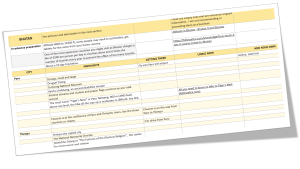Kruger and Johannesburg, South Africa
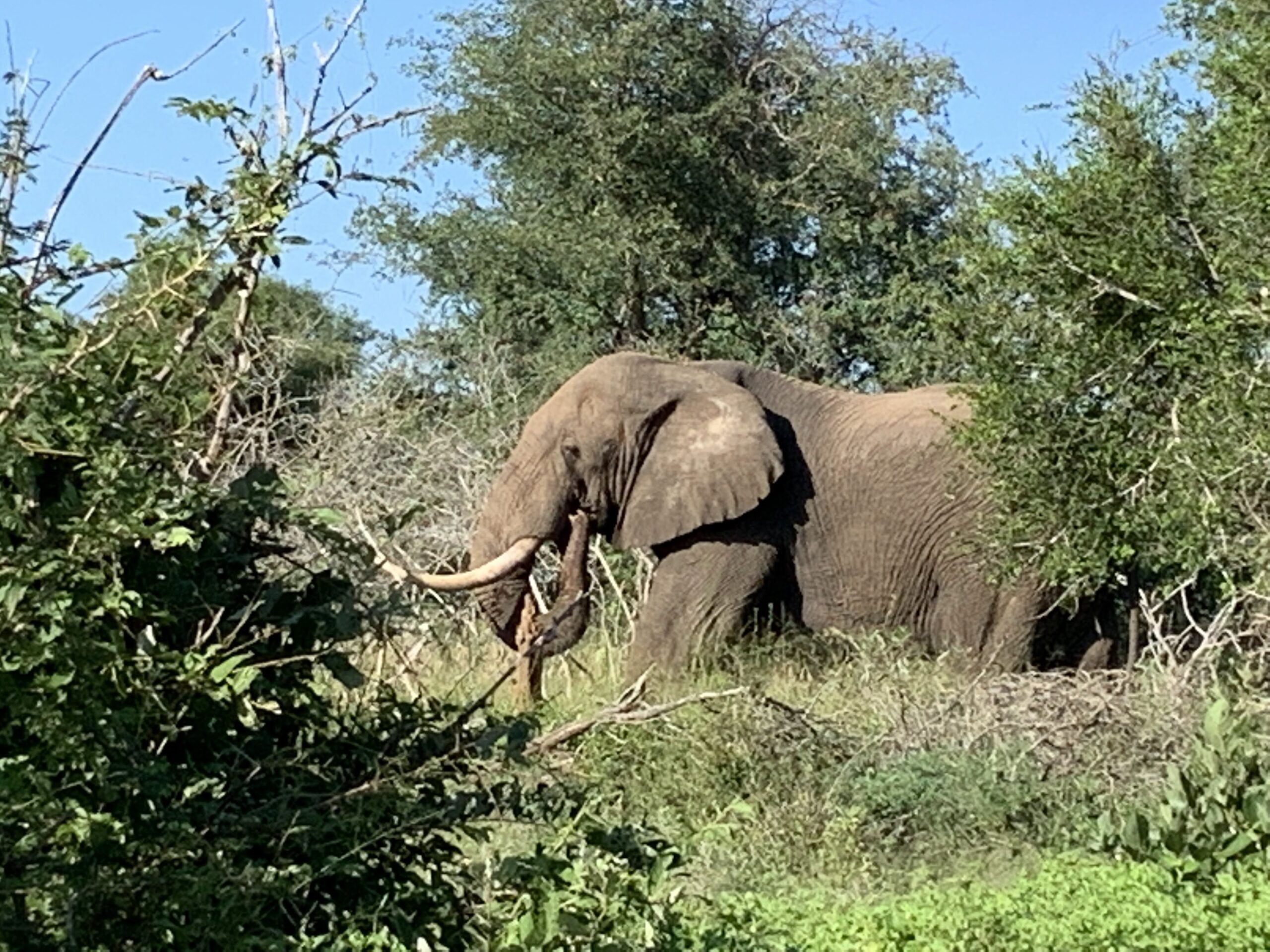
Cover: Kruger National Park
South Africa is a fascinating country which gives you both a glimpse of how wildlife untrammeled by human activity might be, and a cultural mix of people of diverse backgrounds trying to come to terms with their new reality. It does not fail to impress with its variety of landscapes, wildlife, mountains and coastline. Kruger is one of the best game parks you can visit.
It is many people’s dream to watch animals in the wild and going to game reserves in Africa allows one to realize that dream. Tourists need to exercise a lot of caution when they travel in these parts. Crime rates in cities like Cape Town, Johannesburg and Pretoria are very high but with following certain protocols and be safe, one is sure to enjoy one of the trips of a lifetime.
See no pins? Please move map left-right-up-down until you see them. Zoom in and out for pins to separate. Use the Share icon on top right corner of the map to send it to your phone or email.
(A) Johannesburg (B) Mbombela (C) Kruger National Park
What’s on this page?
IMPORTANT
- For any serious travel planning and to enhance your experience with the pictures, view all blog pages on a laptop/large screen versus on the phone.
- All the text content is in the collapsible sections (+ to open, – to close).
- Every picture on the site has a caption that is not visibly displayed. How to see the name or location in pictures of interest? If using a laptop, hover over the image. If using a mobile, hold finger down on the image. (This instruction may vary with browsers, and type of device such as iphone and Andriod).
NEED HELP WITH TRIP PLANNING?
You can use the Highlights section to create your own itinerary.
But no time or inclination to delve into details? No worries!
I will curate and customize a trip for you, based on your interests and needs. You will receive a well-planned day-by-day itinerary and travel advice.
Visit Services & About for more details.
Tidbits
Know the Essentials
Driving is to the left. In the National Park there are self-drives but it is more informative when you travel with a guide. Also, easier to relax and see the wildlife. Crime is very high in South Africa and so whether driving or in general, be very vigilant.
Most common type of power outlet in South Africa is of Type M. The voltage used is 220-240V, and the frequency is 50Hz.
There are about 11 languages spoken in South Africa and English is widely understood and spoken with tourists.
Currency used in South Africa is the Rand. Credit cards are quite widely accepted but you need to be aware of any foreign transaction fees charged by your credit card company.
Here is a month-to-month guide on weather and events for travel to South Africa.
About the blog
The blog on South Africa is going to have two parts as it has many activities and places to sight-see. Thanks to Baldev Nair from Dallas, TX for contributing his writing and pictures to the Narrative section of Part 1 which covers Kruger National Park and Johannesburg. Also, thanks to Malathy Chandrasekhar, Dallas for her contribution of pictures from the Apartheid museum in Johannesburg and Kruger.
All blog pages are best viewed on a laptop/large screen versus on the phone, especially for any serious travel planning, to minimize scrolling and to appreciate its larger-than-life pictures. Depending on the device you are using, hover or hold down on an image for its name/location. Note: There are other similar websites and so don’t miss the s and the u in Travels to Savour (travels to savour 🙂 ).
Highlights
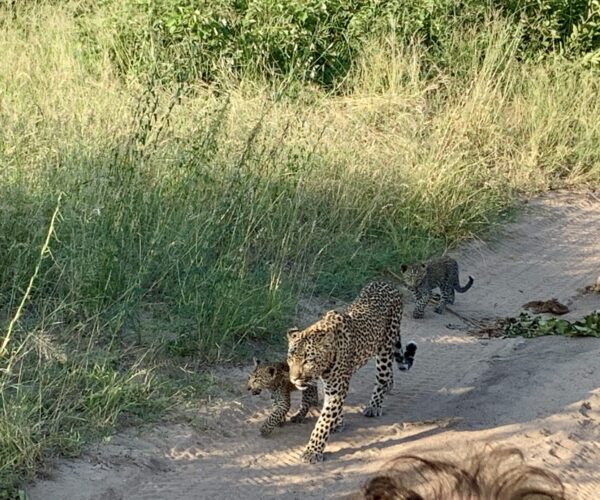
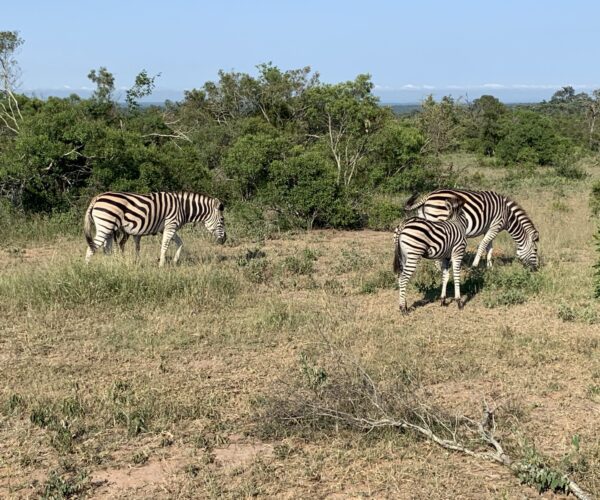
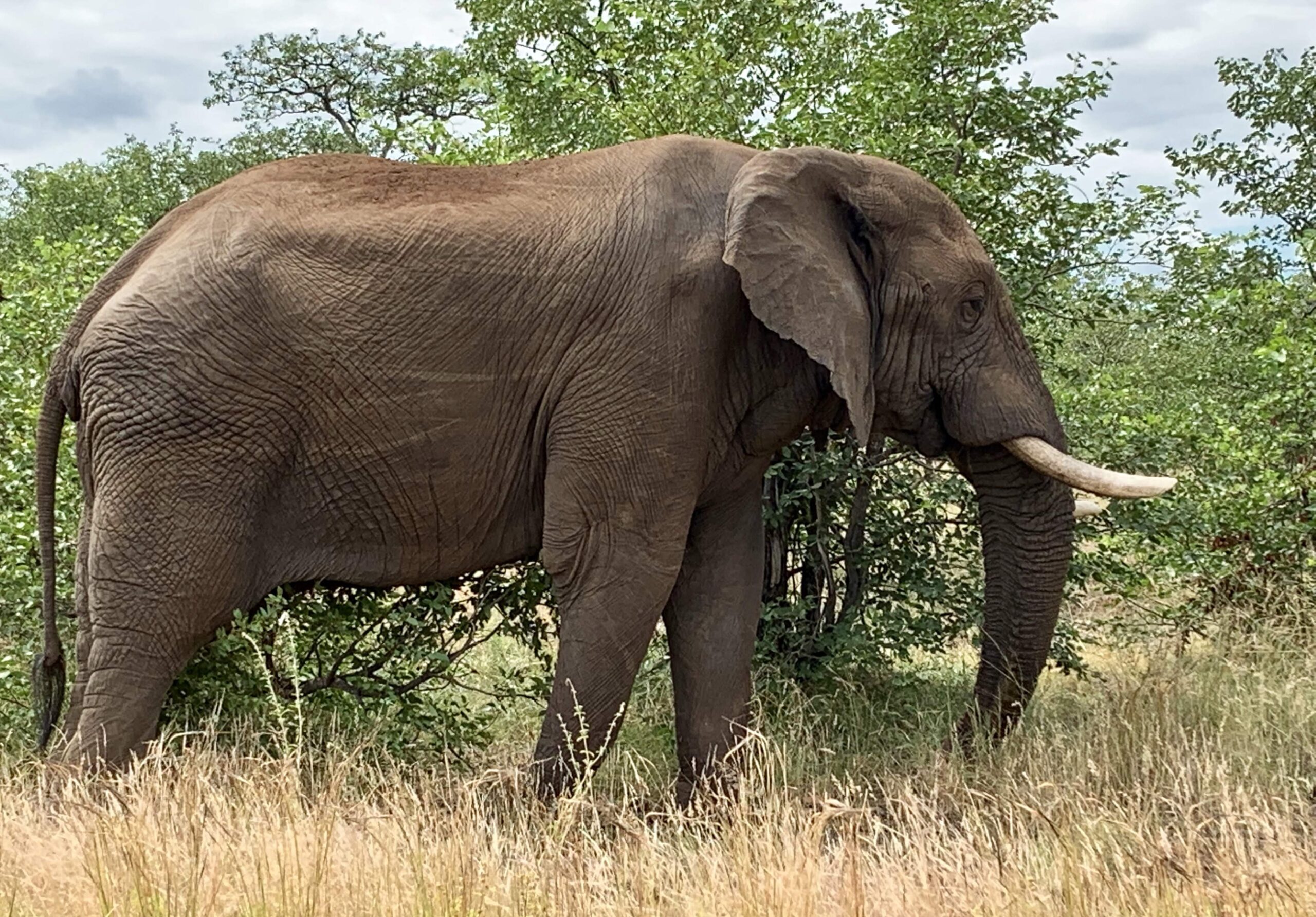
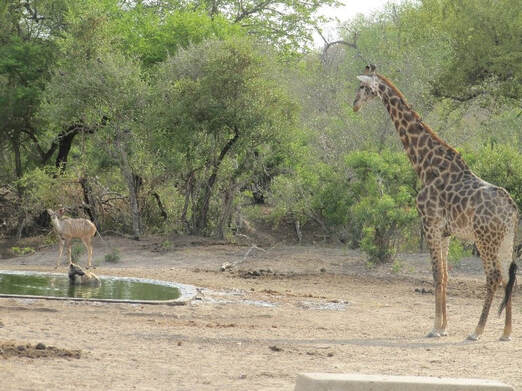
Kruger National Park
Kruger National Park is one of Africa’s premier wildlife reserves and a top destination for wildlife enthusiasts and nature lovers. Kruger is located in northeastern South Africa, stretching across the provinces of Mpumalanga and Limpopo.
-
- Wildlife Viewing: Kruger is home to a vast array of wildlife, including the Big Five (lion, elephant, buffalo, leopard, and rhinoceros), as well as several other species such as giraffe, zebra, cheetah, hyena, and various antelope species. The park offers excellent opportunities for game drives, guided walks, and even night drives to see nocturnal animals. Staying in lodges on the park is your best option.
- Scenic Landscapes: In addition to its wildlife, Kruger National Park boasts diverse landscapes, including open savannah, woodland, rivers, and rocky outcrops. The changing scenery adds to the allure of the park and provides stunning backdrops for wildlife photography.
- Self-Drive Safaris: Kruger National Park is well-suited for self-drive safaris, with a network of well-maintained roads and clearly marked signposts. Visitors can explore the park at their own pace, stopping at waterholes and viewpoints along the way. Needless to say, always follow park rules.
- Safaris: For those who prefer a more guided experience, Kruger offers guided game drives led by experienced rangers who provide insights into the park’s wildlife and ecosystems upclose, and know the park’s terrain and wildlife habits. These drives often take place in open safari vehicles, allowing for better wildlife viewing and photography opportunities. You can join guided morning, afternoon, or night drives.
- Birdwatching: Kruger National Park is a birdwatcher’s paradise, with over 500 bird species recorded within its boundaries. From colorful kingfishers to majestic raptors, bird enthusiasts will have plenty to see and photograph.
- Bush Walks: Accompanied by armed rangers, guided bush walks offer a unique opportunity to experience the African bush on foot.
- Hot Air Balloon Safaris: This kind of a safari provides a memorable experience of seeing the park and its wildlife from above.
Conservation Efforts: Kruger National Park plays a crucial role in wildlife conservation, particularly for endangered species such as rhinos. The park is involved in various conservation initiatives, including anti-poaching efforts and habitat restoration projects.
Entrance Fees and Permits: Visitors to Kruger National Park are required to pay entrance fees, which vary depending on nationality and the type of vehicle. It’s advisable to book accommodation and permits in advance, especially during peak season, to secure your preferred dates and locations.
Overall, Kruger National Park offers an unforgettable safari experience, allowing visitors to immerse themselves in Africa’s untamed wilderness and witness some of the continent’s most iconic wildlife in their natural habitat. Whether you’re a first-time safari-goer or a seasoned wildlife enthusiast, Kruger promises adventure, excitement, and moments of awe-inspiring beauty.
Where to stay in Kruger National Park
Accommodation Options: The park offers a range of accommodation options to suit different comfort preferences and budgets. Staying within the park allows visitors to maximize their time for wildlife viewing and immerse themselves in the wilderness experience. There are rest camps run by South African National Parks (SANParks) within the park, as well as private lodges and luxury reserves in the surrounding areas. Booking in advance is highly recommended, especially during peak tourist seasons.
-
- SANParks Rest Camps: These rest camps are located within the park and offer a range of accommodations, from basic campsites to self-catering chalets and luxury lodges. Some popular rest camps include Skukuza (the largest and main camp), Lower Sabie, Satara, Olifants, and Letaba. Booking can be done through the SANParks website or their reservation offices.
- Private Game Lodges: Many private game lodges and reserves border Kruger National Park, offering exclusive and luxurious safari experiences. These lodges often provide all-inclusive packages, including game drives, meals, and guided activities. Some well-known private reserves include Sabi Sands Game Reserve, Timbavati Game Reserve, and Manyeleti Game Reserve.
- Concession Lodges: Kruger has some concession areas where private operators run lodges within the park itself. These lodges offer a more exclusive experience with fewer tourists and off-road game drives.
- Luxury Tented Camps: Some lodges within and around Kruger offer luxury tented accommodations, combining the thrill of camping with luxurious amenities.
There are also some camps which are for the more adventurous that provide an intimate wilderness experience.
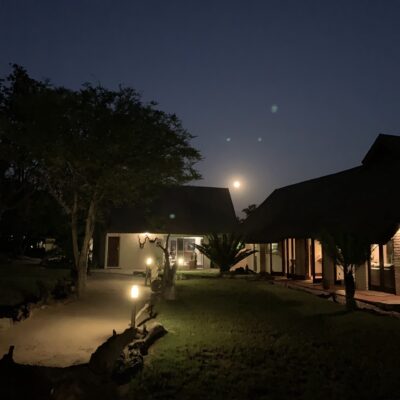
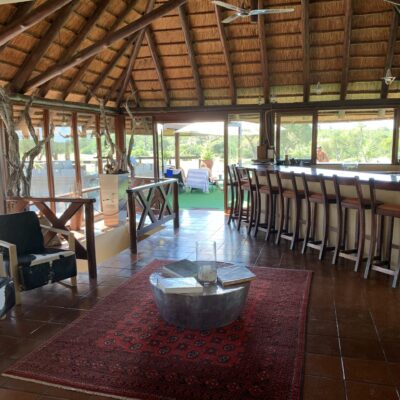
Johannesburg
Also known as Jozi or Joburg, it is a vibrant mix of cultures, history, and entertainment.
-
- Apartheid Museum: This powerful museum provides a detailed and moving account of South Africa’s history of apartheid, the system of racial segregation and discrimination that was in place for decades.
- Soweto (South Western Township): Soweto is a historically significant township on the outskirts of Johannesburg, known for its role in the anti-apartheid struggle. You can visit landmarks such as Nelson Mandela’s former home, Vilakazi Street, the only street in the world where two Nobel Prize winners lived.
- Maboneng Precinct: A trendy, artsy neighborhood that is a hub for creativity and urban culture. It features art galleries, studios, boutiques, restaurants, and a lively atmosphere that attracts both locals and tourists.
- The Botannical garden and zoo are other attractions.
Vegetarian Food in South Africa
South Africa offers a variety of delicious vegetarian food options. Due to its strong Indian influence, vegetable curries are widely available. Pap and Chakalaka is a wholesome meal with Pap made from maize meal, and Chakalaka, a spicy vegetable relish. The Braai (Barbecue) means traditional South where you will find grilled vegetables like corn on the cob, sweet potatoes, peppers, and mushrooms. Butternut Squash Soup is a comforting and popular South African soup made with butternut squash, seasoned with herbs and spices. Vegetarian Bobotie is made with lentils, beans and served with rice. Bunny Chow is a hollowed-out bread loaf filled with curry. Vegetarian versions usually contain lentils or chickpeas as the filling. Vetkoek is a deep-fried bread that with various vegetarian fillings, such as cheese, jam, or vegetables. Samosas (similar to the Indian Samosa) are deep fried puff pastry filled with spiced vegetables or lentils are commonly available as a street food. Also, in urban places it is easy to find are Sushi, Falafel and Indian restaurants. See more about global vegetarian food on the Global Cuisines page. Also check the influence of Indian cuisine in South Africa and rest of the continent in the Kruger and Johannesburg page.
Narrative and Pictures
Into the Wild – Kruger National Park
South Africa is a fascinating country which gives you both a glimpse of how wildlife untrammeled by human activity might be, and a cultural mix of people of diverse backgrounds trying to come to terms with their new reality, says Baldev, the author of this narrative section.
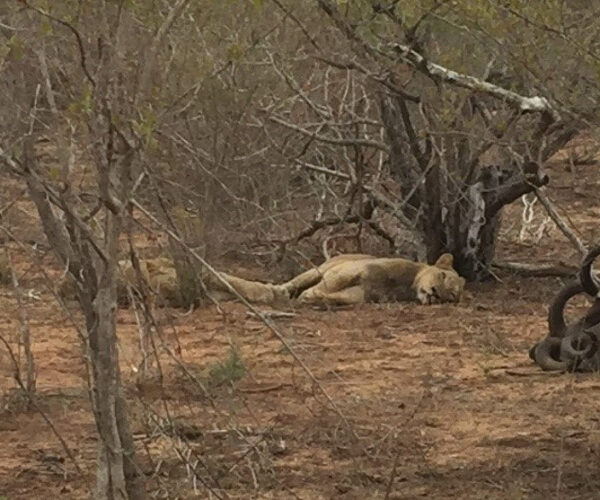
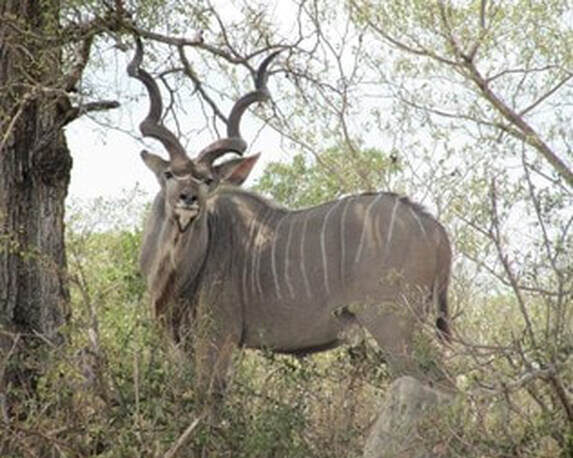
In March 2015, we made a trip to South Africa to realize a long-held desire to go on safari. We flew into Johannesburg and drove to Nelspruit (also known as Mbombela), a distance of 341 km. Leaving in our rented car, we received many warnings not to pause at STOP signs and to get to our destination before dark for fear of carjackers. While I was focused on getting re-acquainted with driving on the ‘wrong’ (left) side of the road, we went over a particularly deep pothole and had to pull over with a flat while still in the city. A helpful passerby assisted with changing tires and we headed back to the car rental office for a change of vehicles. This little misadventure meant that we would get to our destination after dark, a concern that played on our minds all the way. However, we got there without incident, checked in to our resort, and booked a guided safari tour for the morrow.
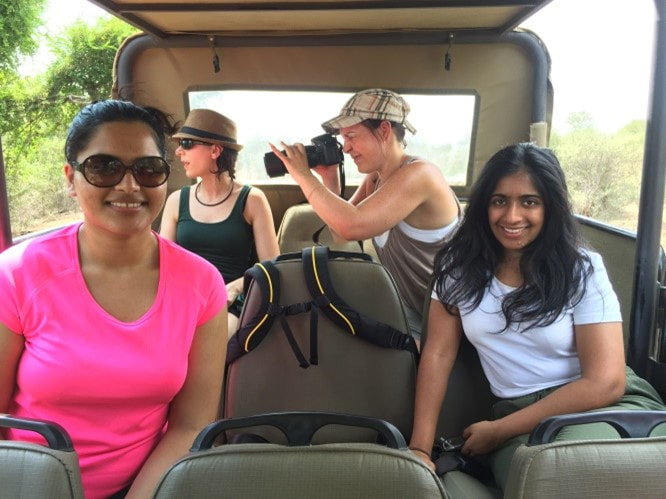
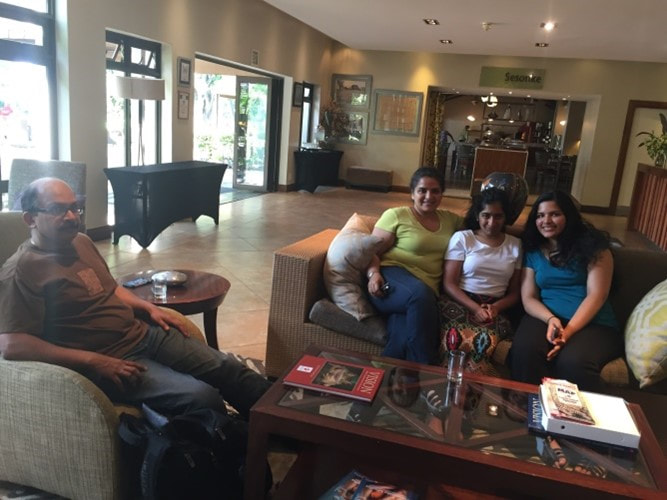
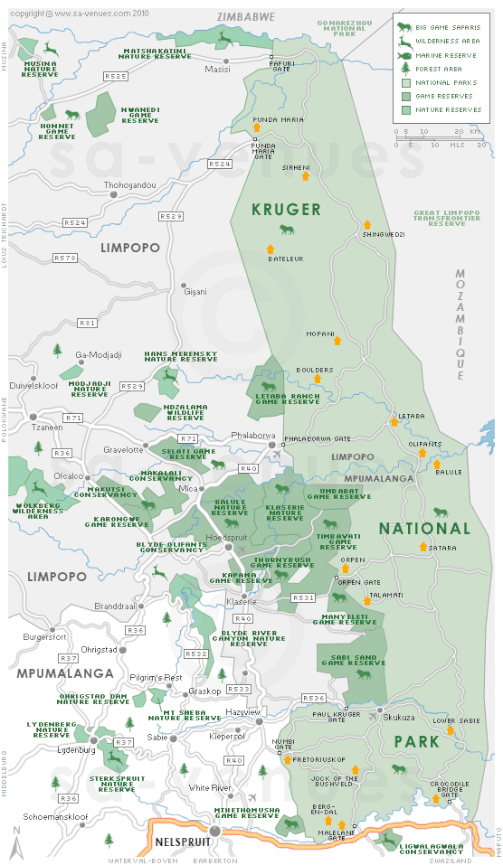
We were close to the southern gate of Kruger National Park, which spreads north to cover an area of over 7,500 sq. miles, bigger than around 90 countries in the world. Every South African safari tourist looks out for the Big Five – lion, leopard, rhinoceros, elephant and Cape Buffalo. Inside the park, there are well paved roads and helpful road signs to guide drivers. You tend to see herbivores fairly close to (or even crossing) the road – elephants, giraffes, rhinoceros, zebras, Thomson’s gazelles, impala, springboks, etc. They seem completely unfazed by the presence of tourists and when they do turn their gaze in our direction, it’s with an air of complete disinterest. The big cats are a different matter; further in the distance and often hard to spot. Don’t let the graphic close-ups of wildlife documentaries give you the wrong impression. While you may get lucky, don’t count on it. The only leopard we saw was perched high on a tree and we saw it through the branches with its tail curling in the wind. At another point, we followed the excited pointing of fellow tourists and made out a flashing streak of yellow– a cheetah on the hunt. Also, the South African safari is very different from what you might see in the Serengeti National Park in Tanzania or the Masai Mara National Reserve in Kenya, such as the frenzied wildebeest migration following the rains.
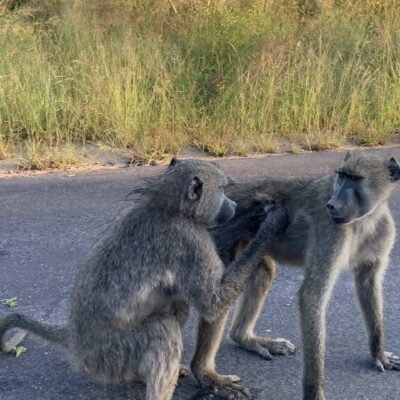

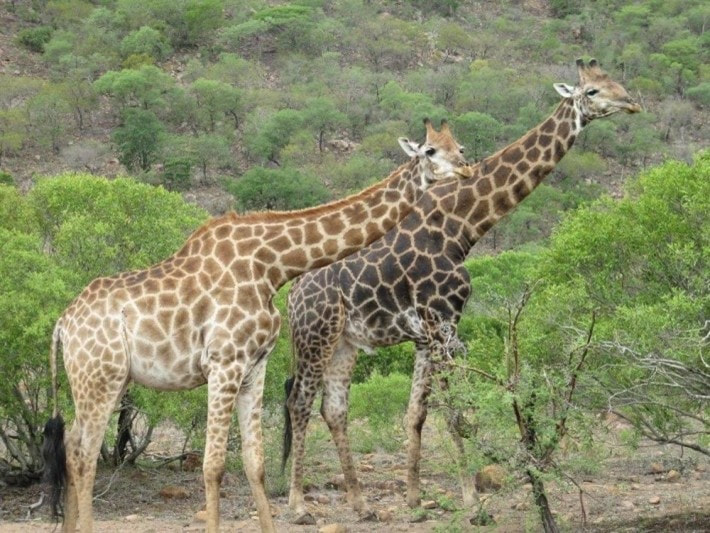
We did not see very much during the guided tour, and so we decided to do the tour again in our car and without a guide the next day. We had picked up that Satara was an area near which lions could be spotted and so we headed in that general direction.Along the way we saw zebra crossings, a black rhino almost shoulder high that crossed the road in front of us with a majestic and unhurried gait, and a sad marker of the harsh reality of life in the wild – several hippo carcasses that bore testimony to a drought brought about by failure of rainfall. The dry season, best for spotting animals, runs from May to September.
The drought meant that animals were forced to the few remaining waterholes that were left. At one of them we saw an African stand-off between a hyena that was in the small pool of water soaking himself and a giraffe and a female kudu desperate for a drink. We watched for a while with neither side vacating their positions. Our patience ran out before theirs but just as we were leaving, the hyena decided he had clearly won the battle, and loped off much to the relief of his thirsty adversaries. Encounters like these must surely be playing out daily all across the park as species bump into each other in their search for food and water.
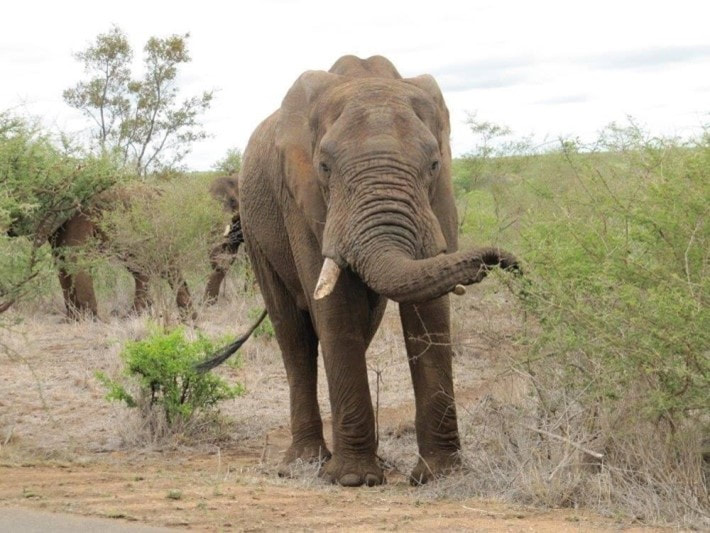
A short line of stopped cars alerted us to the fact that there was something of interest just off the road to the left. We pulled up and came upon a pride of lions that had just made a kill. They were finishing up and getting ready for their siesta, not twenty feet from where we were. In the photograph you can see the remains of lunch on the right.
Johannesburg
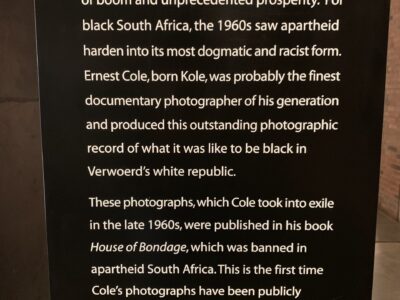
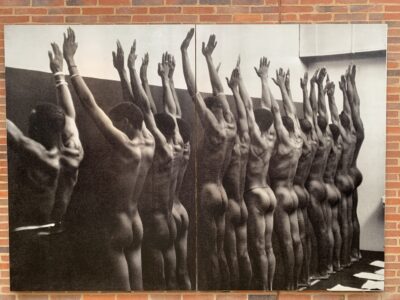
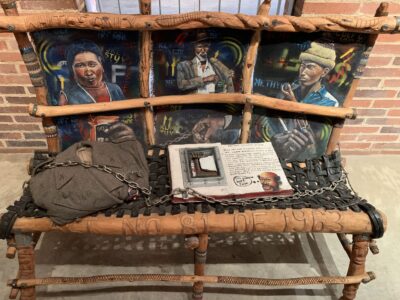
Back in Johannesburg for a couple of days, we saw an urban wilderness that still bore the livid scars of apartheid and its aftermath. Abandoned buildings in downtown signaled a sudden flight from the city to the suburbs. We were told that many of these building had been taken over by ‘robber landlords’ extracting rent from squatters. We drove through Soweto with its teeming hard scrabble life, similar I imagine to Dharavi in Mumbai or the favelas in Rio de Janeiro. Some of the points of interest in the city are Mandela House, the Liliesleaf Liberation Center, and the Apartheid Museum. Liliesleaf was the house of the white middle-class Goldreich family that provided cover for Nelson Mandela and members of his liberation group to secretly meet and plan their activities against apartheid. The group included Ahmed Kathrada, of Indian descent and a key member of the African National Congress, who endured long-term imprisonment in Robben Island prison along with Mandela. At the Apartheid Museum, visitors are asked to pick cards which randomly classify them as White or Non-White, on which basis they are directed along different passageways through the Museum and get a first-hand experience of segregation.
We did not have time to visit Durban, the Indian center of the country. South Africa is a fascinating country which gives you both a glimpse of how wildlife untrammeled by human activity might be, and a cultural mix of people of diverse backgrounds trying to come to terms with their new reality. Certainly worthy of repeat visits.
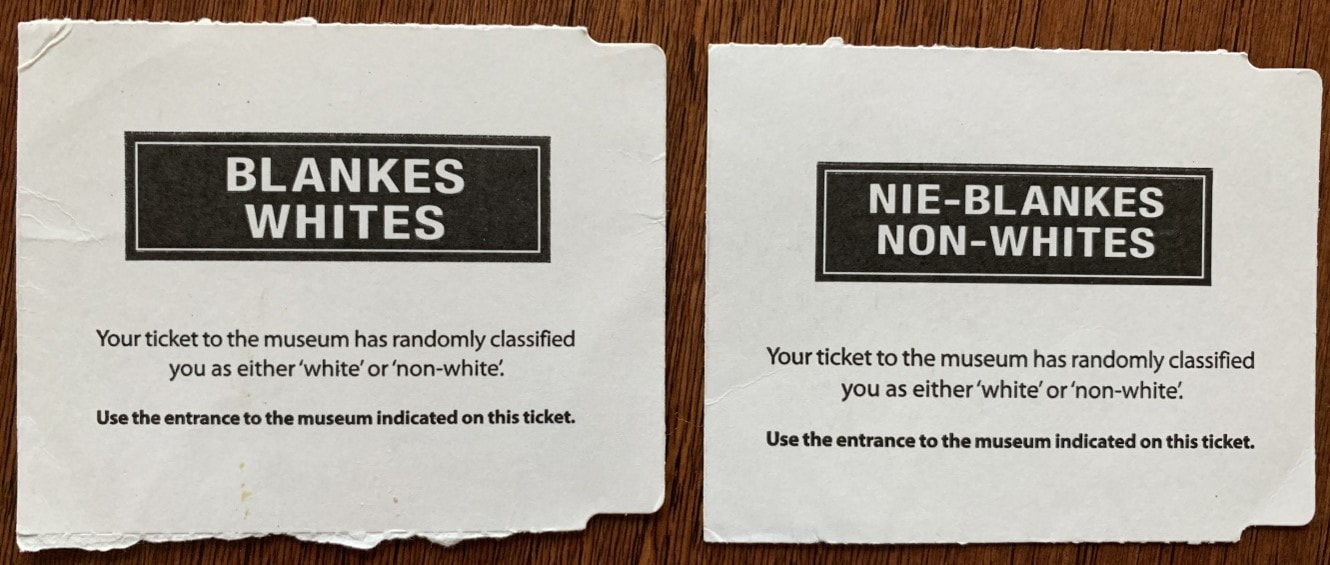
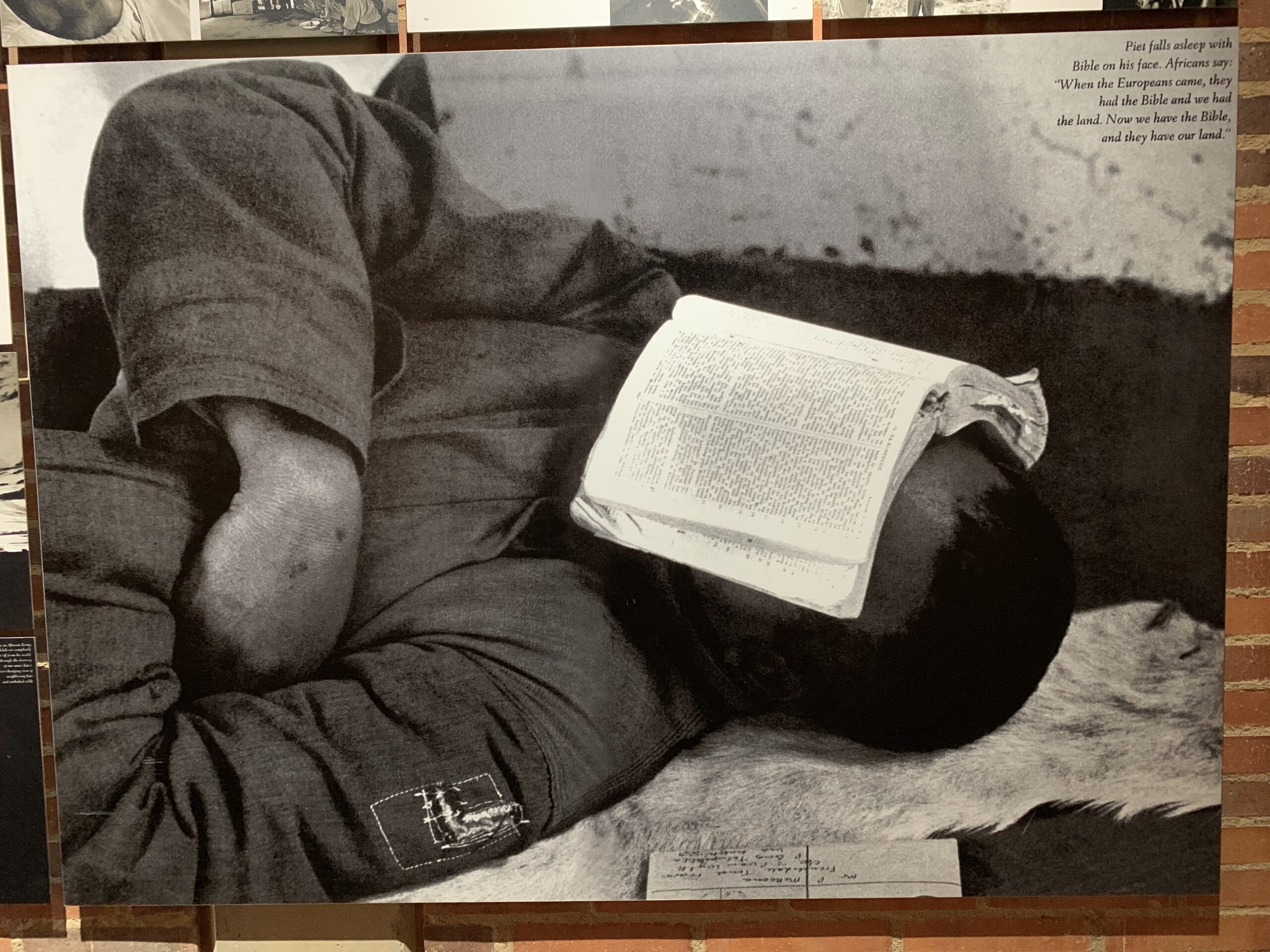
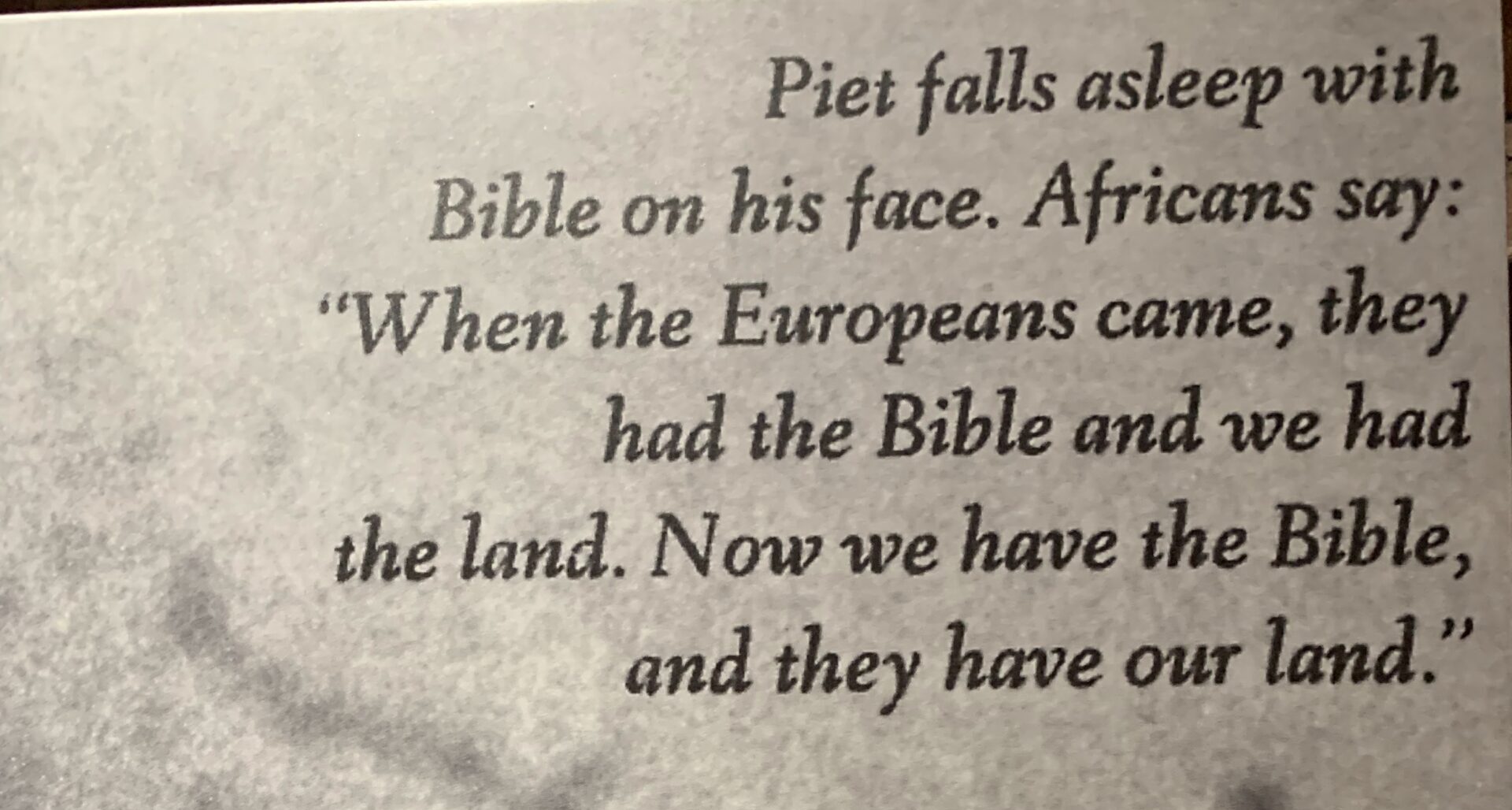
If you have liked this webpage or downloaded a spreadsheet with the itinerary, here is a request from me to support the hard work! Thanks, it’s much appreciated!
- Leave a comment on this page (scroll down), share your own experiences if you have already been to this place.
- Subscribe to travelstosavour and receive 2 free blog posts per month, featuring 2 new destinations (scroll down to the footer to subscribe).
- Follow travelstosavour on social media – Facebook, Instagram and Youtube (by a click of the button in the footer) and share all these goodies with your pals!
Check out other destinations and nature escapes on this site.


